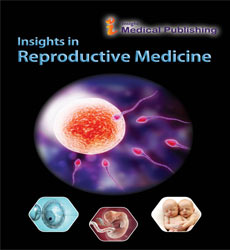The Angiogenic-Promting Agents Lysing in Human Placental Extracts
Evan Suhuit*
Department of Perinatal Medicine, University Medical Center Utrecht, Utrecht, The Netherlands
- *Corresponding Author:
- Evan Suhuit
Department of Perinatal Medicine
University Medical Centre Utrecht
Utrecht, the Netherlands
E-mail: suhuit-e@perintal.nl
Received Date: September 14, 2021; Accepted Date: September 28, 2021; Published Date: October 05, 2021
Citation: Suhuit E (2021) The Angiogenic-Promoting Agents Lysing in Human Placental Extracts. Insights R eprod Med Vol.5 No.1:008.
Description
Placental extracts occurred by lysing human placental tissues. The extracts don't contain cells but are rich during a wide selection of proteins, minerals, amino acids, and steroid hormones. Placenta extracts includes wound healing where the expansion factors, amino acids, and angiogenic-promoting agents which had proven that they are beneficial. The human placenta could also be a singular organ that connects the developing fetus to the uterine wall. The placenta provides waste elimination, nutrient uptake, thermo-regulation and gas exchange to growing fetus via the mother’s blood supply. Since the placenta may be a provisional organ, it becomes a salvage material after delivery. From many years, clinicians and researchers work on the appliance of the placenta for therapeutic purposes. The types of placental preparation utilized in the studies are fragments of placental tissue, amniotic and chorionic membranes, duct, ammonic fluid, placental extracts, and rope blood stem cells. Methods of application widely vary from biomarkers, intramuscular, intravenous, and intraoperative.
Placental extracts are classified to many types counting on the methods of its preparation. Initial extraction was done by employing the Filatov’s procedure but an acid-hydrolysed water extraction is prevailing in Korea thanks to its high recovery of functional macromolecules from placental tissues. Human placentas are collected from full-term delivery, were tested for human immunodeficiency virus and hepatitis B and C viruses. They were dig pieces and these pieces are defatted with acetone, and extracted with water through pepsin and hydrochloric acid-catalysed hydrolysis. Placental extract was tested and the result is germ-free, antihistamine, and endotoxinfree under the regulation of Korean food and drug administration. The final placental extract product was sterilized, packaged at 2 ml/ampule, and approved for injection for human by subcutaneous and intramuscular. Insoluble macromolecules, such as polysaccharide, polynucleotide were excluded during the manufacturing process.
Methods of placenta extract
Acupuncture points for treating neck pain and back pain most commonly results from injuries to muscles, disks, nerves, ligaments, or facet joints with subsequent inflammation and spasm. Degeneration of disks or joints produces equivalent symptoms and occurs by aging, previous injury, or excessive mechanical stresses. Herniation of disk tissue produces a profound inflammatory reaction with release of inflammatory chemical mediators especially TNF-α. Subsequent to the release of TNF-α, an increase in the formation of inflammatory mediators like prostaglandin and gas also as phospholipase A2 activation ensues. Acupuncture points for treating shoulder pain shoulder pain may be a small sac containing fluid that lies between bone and other moving structures like muscles, skin, or tendons. The bursa allows smooth gliding between these structures by acting as an anti-friction device and shielding the structures from rubbing against bones. Acupuncture points for treating knee arthritis. Arthritis means inflammation of the joints. The symptoms of knee arthritis are intermittent pain, swelling, redness, and stiffness within the joints. There are many various sorts of knee arthritis; a number of which are atrophic arthritis, osteoarthritis, and infectious arthritis. Acupuncture point injection is one of the most effective therapeutic interventions on inflammation-involving pain diseases, which are caused by functional degeneration or structural injury. The origin of all pain is inflammation and this inflammation is known as inflammatory response. Acupuncture Placenta Injection with placental extract provides therapeutic effects by anti-inflammatory and regenerative effects on injured or degenerative tissues.
Open Access Journals
- Aquaculture & Veterinary Science
- Chemistry & Chemical Sciences
- Clinical Sciences
- Engineering
- General Science
- Genetics & Molecular Biology
- Health Care & Nursing
- Immunology & Microbiology
- Materials Science
- Mathematics & Physics
- Medical Sciences
- Neurology & Psychiatry
- Oncology & Cancer Science
- Pharmaceutical Sciences
